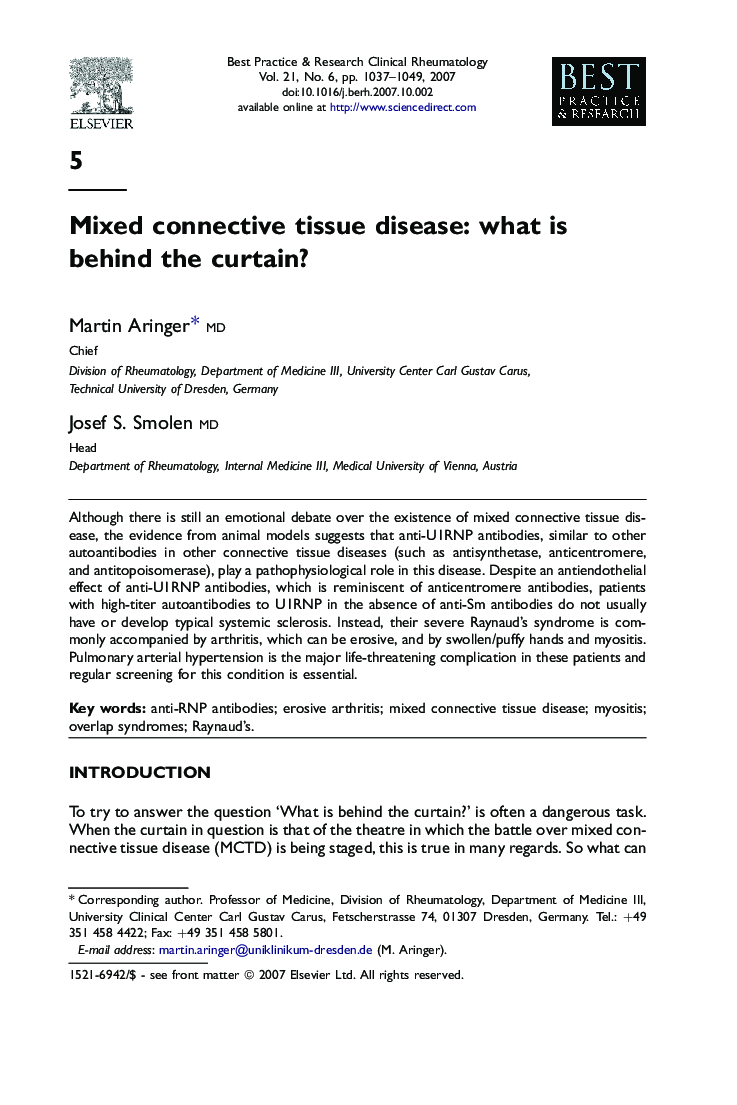| Article ID | Journal | Published Year | Pages | File Type |
|---|---|---|---|---|
| 3343432 | Best Practice & Research Clinical Rheumatology | 2007 | 13 Pages |
Although there is still an emotional debate over the existence of mixed connective tissue disease, the evidence from animal models suggests that anti-U1RNP antibodies, similar to other autoantibodies in other connective tissue diseases (such as antisynthetase, anticentromere, and antitopoisomerase), play a pathophysiological role in this disease. Despite an antiendothelial effect of anti-U1RNP antibodies, which is reminiscent of anticentromere antibodies, patients with high-titer autoantibodies to U1RNP in the absence of anti-Sm antibodies do not usually have or develop typical systemic sclerosis. Instead, their severe Raynaud's syndrome is commonly accompanied by arthritis, which can be erosive, and by swollen/puffy hands and myositis. Pulmonary arterial hypertension is the major life-threatening complication in these patients and regular screening for this condition is essential.
